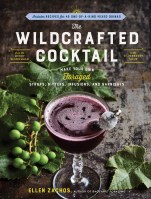Making Fruit Wine: How Much Sugar Should You Add?
If you’re new to making small-batch wines with fruit, it can be hard to judge the right amount of sugar to add to your musts. Author and winemaker Richard Bender offers his rule of thumb.

Winemaking doesn’t need to be complicated and intimidating, the way it is often presented. You don’t need to plant a vineyard to make wines. Many ingredients can be gathered for free or can be easily grown in a summer garden. If you are a wine lover, I encourage you to make your own wines.
Before you begin the process of making wine, first consider your two main ingredients: fruit and sugar.
How Much Fruit?
The amount of fruit to use per gallon of wine varies depending on the type of fruit and how intensely flavored you want the finished wine to be. Most fruit wines should contain anywhere from 3 to 6 pounds of fruit per gallon of wine. A smaller amount of fruit will produce a lighter, more delicate wine, while a larger amount will make a heavier, more intense wine. It’s nice to have both types of wine in your cellar.

I seldom actually weigh my fruit. Instead of weight, I usually go by volume when making larger batches of wine. I want my primary fermentation bucket to be about half full of fruit to make a bucket of wine. Experiment with different amounts to discover your own preferences.
If you don’t have quite enough fruit for the volume of wine you want to make, you can fill in with raisins, which will add both body and sugar. In order to get maximum benefit from the raisins, I always soak them overnight in just enough water to cover them and then blend the raisins and soaking water in a blender before adding them to the must.
How Much Sugar? A Rule of Thumb
The alcohol in wine comes from sugar. Commercial grape wines are made by crushing the grapes and fermenting the juice. Adding sugar, called chaptalization, is done in some areas where grapes don’t develop high enough levels of sugar to reach the standard alcohol percentage of 12 to 14 percent, but chaptalization is prohibited in some countries and in California. Most other fruits have less sugar than grapes and need to have some sugar added to their fermentation to reach appropriate levels of alcohol content.
Because I want my wines to keep and age well, but I don’t use sulfites, they need a relatively high alcohol content. The minimal concentration needed to ensure proper preservation and aging is 14 percent, though some of my wines approach up to 18 percent alcohol, which is reaching the level of port wine. For my wines to achieve their characteristic high alcohol concentration, they need lots of sugar. The added sugar can take many forms — table sugar, brown sugar, raisins, molasses, honey, and so on — but in my wines, I use primarily plain white sugar and raisins.
My fruit wines are typically made with chopped or crushed fruit, rather than juice. I believe that using the entire fruit, including the pulp and skins, adds more flavor and color to the wine. Because I use fruit, rather than juice, I have to add water, usually with sugar, to the developing wine. But instead of a hydrometer, I use a rule of thumb for how much sugar to add.

Three pounds of sugar in 1 gallon of water will produce approximately 14 percent alcohol in a finished wine if the sugar is completely fermented. I use this calculation as a rough guide for how much sugar to add to my wine musts. Fruits with high sugar contents can get by with between 2 and 3 pounds of added sugar per finished gallon of wine. (By contrast, wines made from flowers and herbs — ingredients with essentially no sugar — need at least 3 pounds of added sugar per gallon.)
However, overloading the must with sugar can overwhelm the yeast and make it difficult for fermentation to begin. With small batches (1-gallon recipes), the amount of sugar is small enough that it won’t bother the yeast. In these cases, you can add the sugar all at once at the beginning of primary fermentation. However, larger batches, like the 5- to 6-gallon batches that I tend to make, require a proportionately larger amount of sugar. For these, I add the sugar in stages to keep from overwhelming the yeast. As a general rule I don’t add more than 3 pounds of sugar per gallon of wine at a time.
Choose from a wide array of wines to suit the fancy of your moods and the taste-preferences of your wine-drinking friends. Sharing your homemade wines is one of the greatest pleasures of making it. Cheers!











